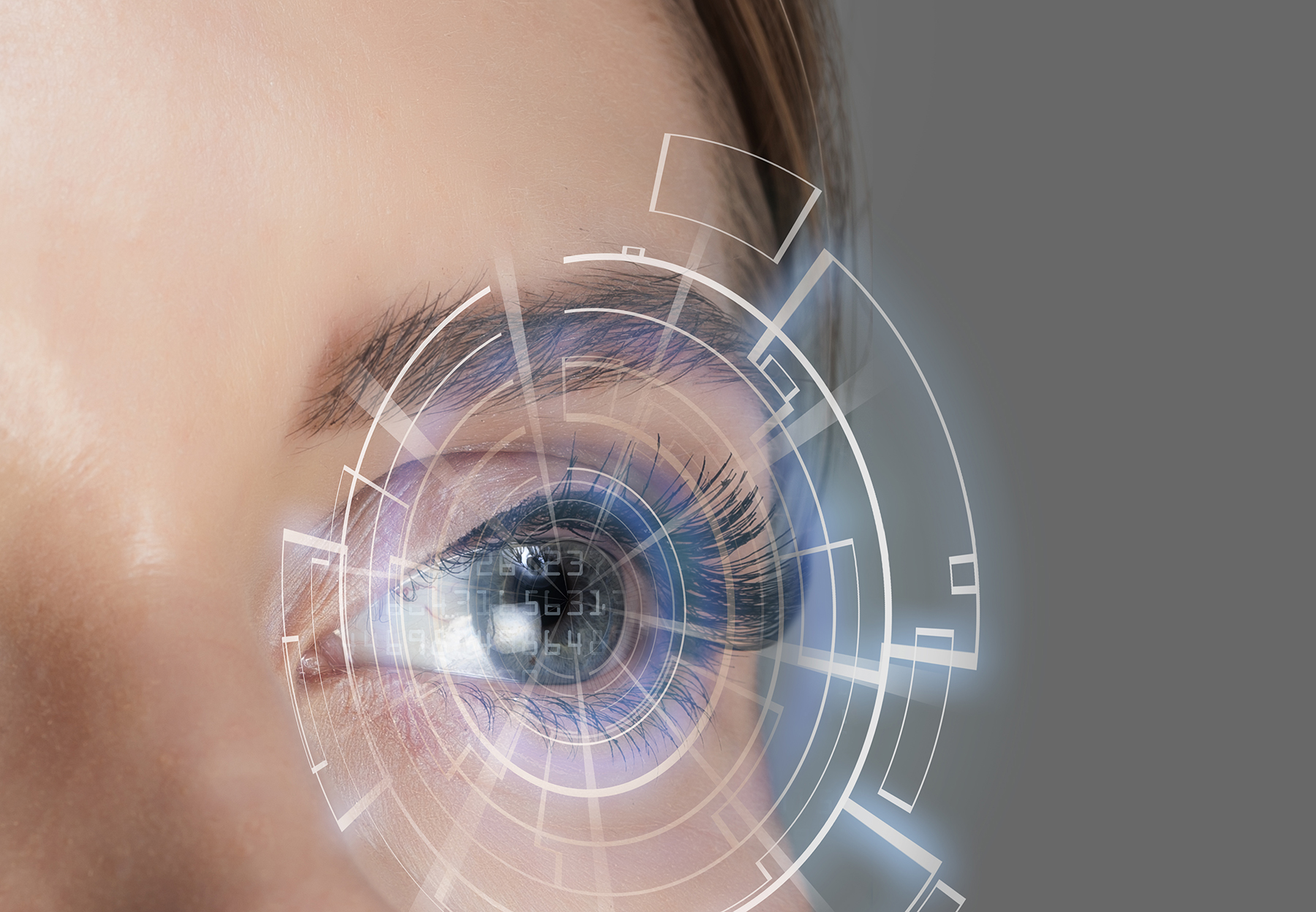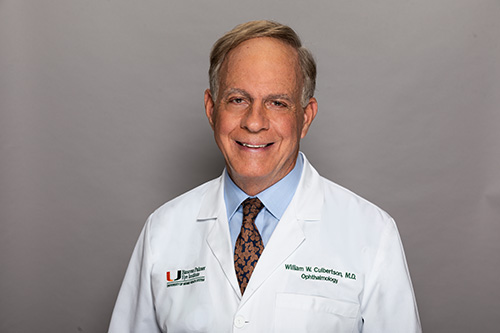LASIK: The Evolution of a Revolutionary Procedure

Celebrating 25 years of LASIK at Bascom Palmer Eye Institute
with

Ophthalmologist and Medical Director
Bascom Palmer LASIK and Laser Vision Center
Experts at Bascom Palmer Eye Institute have been at the forefront of laser corrective surgery since the beginning.
Over the years, Dr. Culbertson and the team have been testing and innovating new technologies. His firsthand experience provides insight into LASIK’s positive impact on patients’ lives and the future of eye care.
Q: Tell me a little about the early days of refractive surgery.
A: Actually, we started doing what’s called refractive surgery back in 1980, so that’s 40 years ago. We began with radial keratotomy, which was the first generally used procedure to decrease nearsightedness. And we were a part of a national study called “PERK,” Prospective Evaluation of Radial Keratotomy. We didn’t invent anything in the radial keratotomy procedure. But, we were doing that kind of operation for nearsightedness and astigmatism for 14 years or so — until 1994 — when the excimer laser was approved for use in the United States.
Q: What was the Institute’s role in the development of LASIK?
A: The excimer laser was approved in 1994, and we got one of the first. In fact, our laser was serial #1. That got us started in laser corrective surgery, by modifying the shape of the cornea with the laser. The general idea was to make the cornea flatter for nearsightedness and steeper for farsightedness. This whole type of surgery was a bit controversial among ophthalmologists at the time. Still, our department chairman at that time, Dr. John Clarkson, saw the value of it.
In 1995, we did our first LASIK procedure using the excimer laser under a thin layer of the cornea. The LASIK procedure was quite an advance in that you had minimal discomfort, and it healed overnight. People could get back to work the next day with good vision.
Over the years, our faculty ophthalmologists have been part of the FDA approval studies for many of the advancements in LASIK, including “wavefront-guided” LASIK and the creation of the LASIK corneal “flap'” and corneal incisions with a femtosecond laser.
Q: How did people respond to the procedure?
A: The patients, even the first ones we did, were thrilled. The next day, they’re seeing without glasses like they haven’t seen since they were children. It frees them up for so many things, whether they’re athletically inclined or they’re in front of the public eye, or they’re just tired of hassling with glasses or contact lenses. It’s a major change in their life. They’re no longer a person who wears glasses. They no longer have to keep track of their glasses and put their contacts in and out. It changes their life. And they’re able to do things like snorkeling or skydiving, or all kinds of sports that they couldn’t do before, now without glasses.
Q: How have you seen LASIK and refractive surgery change over time?
A: The innovations were quite a bit in the beginning. In the first 10 years, we saw a major improvement every year or two. Now, the procedure has become so refined that there’s not a lot extra to do. The margin for improvement is so small right now, compared to 20 years ago or 25 years ago, when there was quite a bit of margin for improvement.
Q: What do you see as the future of vision correction?
A: One area of potential progress is making the cornea, the front layer of the eye, stronger so that we can treat more patients. For instance, patients with thinner corneas or irregular corneas, if we can make them stronger, then we can go ahead and treat them very specifically and know that it’ll remain rather stable. One option is called crosslinking. We use ultraviolet light and a vitamin, riboflavin, that’s used in a liquid form on the cornea to stiffen the cornea and make it stronger so that the result of LASIK is more dependable. This could allow us to treat people with irregular and/or thin corneas that were previously untreatable.
Q: What do you tell people about patient safety during the pandemic?
A: We are presently screening patients at the front door so that nobody gets in without having a history taken, and everyone is given an effective mask. We also have limited any family or guests accompanying patients, because that cuts in half the number of people circulating in the clinic. And it also has allowed us to create social distancing in space and time, in that we don’t have people congregated close together in the waiting rooms. All rooms and waiting areas are constantly sanitized. Besides, everyone who has a procedure, including LASIK, at Bascom Palmer, gets a Covid-19 screening test before their procedure to further protect other patients and staff.
We’ve tried to make the whole process of seeing a patient much more efficient so that their time in the clinic is less, and that’s good for them. It also cuts back on people in the waiting room. In refractive surgery, in the laser vision center, we have used telemedicine very effectively to have the patient speak to a doctor by telephone ahead of time, so that we can find out whether the potential patient is a candidate or not.
Learn more about LASIK and laser vision correction, as well as Virtual Visits at Bascom Palmer.
Q&A compiled by Wyatt Myers, a contributing writer for UMiami Health News.
Tags: Bascom Palmer Eye Institute, Dr. William W. Culbertson, LASIK
